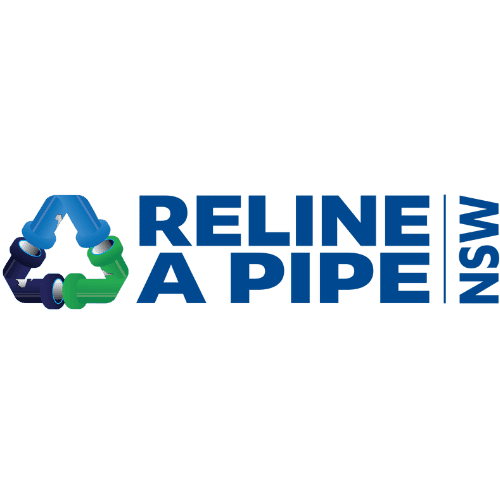Are your drains backed up? Is your toilet refusing to flush? Is bathwater just sitting there from last night? Clogged drains can be frustrating. However, unblocking them can sometimes be easy. You may need a plunger, nearly boiled water, baking soda, a couple cups of vinegar. These methods can work well for indoor and outdoor drains if the issue is only mild.
Dealing with blocked drains outside your home is usually trickier. Sometimes, a slow-draining kitchen sink can indicate a drain blockage outside. Look for these signs of trouble:
- Water coming up drain pipes elsewhere when you flush the toilet
- Water backing up in an outside outlet
- Gurgling or bubbling sounds
- Slow-draining plumbing lines or standing water
- Unpleasant drain smells
Remember, if the blockage is within your property, it’s your responsibility to fix it. If a small problem worsens, you could end up with flooding or water damage. This can even affect your home’s foundations. It’s best to address these issues as soon as possible.
Reasons Plumbing Drains Get Blocked
Here is a list of some of the common culprits that cause an outdoor drain blockage and that property owners and businesses can keep an eye on.
- Build-up of Sediment, Debris, and Waste:
- Food waste, especially oil and grease from washing up.
- Accumulation of sediment over time.
- Leaves and Moss:
- Dead leaves collecting on top of drains and blocking the strainer/grill.
- Moss growth that can obstruct water flow.
- Tree Roots:
- Invasive roots from nearby trees entering and obstructing pipes.
- Soil and Mud:
- Soil and mud accumulation, particularly during heavy rains or landscaping activities. As there are openings and drain screens, things like leaves and dirts can enter external drainage.
- Litter and Other Debris:
- Random litter that can block drains, including plastic, paper, and other waste materials & everyday household products that may end up down the drain.
- Fats, Oils, and Grease (FOG):
- Pouring fats, oils, or grease down the sink, which solidifies and causes blockages.
- Coffee Grounds:
- Disposal of coffee grounds that accumulate and create clogs and debris buildup.
- Hair and Soap Residue:
- Accumulation of hair and soap scum, especially in bathroom drains.
- Wet Wipes and Excess Toilet Paper:
- Flushing non-flushable items like wet wipes and excessive toilet paper.
- Dental Floss and Cotton Buds:
- Flushing these small items that can easily contribute to blockages.
- Nappies and Sanitary Items:
- Disposal of nappies and other sanitary products in toilets.
Understanding these causes can help in taking preventive measures and addressing issues before they lead to severe plumbing problems.
Experiencing a blocked drain can be a frustrating situation, especially when it’s outdoors. Whether it’s a clogged garden drain or a blocked patio drain, knowing how to unblock drains outside can save you from potential flooding and damage. Here are three straightforward methods to get those drains flowing freely again.
1. Use a Plunger
A plunger is a versatile tool that can be effective for unblocking outdoor drains. Here’s how to use it properly:
Steps to Follow:
- Choose the Right Plunger: Ensure you have a flat-bottomed plunger designed for sinks and drains.
- Cover the Opening: Place the plunger over the drain opening, ensuring a tight seal.
- Create Suction: Push down firmly and then pull up to create suction. Repeat this motion several times.
- Check for Movement: After several attempts, remove the plunger and see if the water begins to drain. If it does, you’ve successfully unblocked the drain.
Tips:
- For better results, try adding boiling hot water to the drain before plunging.
2. Try a Wire Coat Hanger
If the plunger doesn’t do the trick, a DIY drain snake can help clear more stubborn blockages. This is created by stretching out a wire hanger and here’s how to use one:
Steps to Follow:
- Insert the Wire Hanger: Create a hook on the end of the wire then feed the wire into the drain until you feel resistance.
- Rotate the Hanger: Turn the wire to break up the clog. This will help the hook in the wire grip onto the obstruction.
- Pull Out the Debris: Once you feel that the blockage has loosened, slowly pull the wire coat hanger back out.
- Flush the Drain: After removing the wire, run water through the drain to flush out any remaining debris.
Tips:
- If the clog is still present, you may need to repeat these steps or use a longer piece of wire.
3. Use Boiling Water and Baking Soda
A natural method to unblock drains outside involves using boiling water and baking soda or bicarbonate of soda. This combination can effectively dissolve grease and soap buildups that can migrate from the internal drains to the external drains.
Steps to Follow:
- Boil Water: Begin by boiling a kettle of water.
- Add Baking Soda: Pour approximately one cup of baking soda directly into the drain lines.
- Pour in Boiling Water: Follow with the boiling water. This reaction can help dislodge minor blockages.
- Repeat if Necessary: For more stubborn clogs, you can repeat this process once or twice.
Tips:
- Be cautious when pouring boiling water, as it can cause injury or damage to some outdoor surfaces.
Know when to call in the professionals
Knowing how to unblock drains outside can save you time and money while preventing water damage to your property. Whether you opt for a plunger, a wire drain snake, or a natural solution with baking soda and boiling water, these methods can effectively address most drain issues. However, if repeated attempts fail to clear the blockage, it may be time to consult a professional plumber. Ensure your outdoor drains are well maintained to avoid future clogs and keep your drainage systems working efficiently!
How Jet Blasting Can Safely and Gently Clear Blocked Drains
Blocked drains can be a significant nuisance for homeowners, leading to unpleasant odors, slow drainage, and even potential flooding. While there are various methods to tackle this issue, one of the most effective and non-invasive techniques is jet blasting. This method utilises high-pressure water jets to clear away blockages without damaging the plumbing system.
What is Jet Blasting?
Jet blasting, also known as high-pressure water jetting, is a process that involves the use of specialised equipment to propel water at extremely high pressures through drain pipes. This method is designed to dislodge and remove a wide range of blockages, including grease, tree roots, silt, and debris, all while being gentle on the pipes themselves.
How Does Jet Blasting Work?
- Preparation: Before the jet blasting begins, a professional plumber will assess the drain system using cameras to identify the location and type of blockage. This step is crucial to ensure that the most effective approach is taken.
- Equipment Setup: The plumber connects a high-pressure jetting machine to the drain. This machine can generate water pressures ranging from 1500 to 4000 PSI, depending on the severity of the blockage.
- Jetting Process: A specialised nozzle is inserted into the drain. As the machine is activated, water is blasted through the nozzle in controlled bursts. The force of the water is powerful enough to break apart clogs and flush them away into the sewer system.
- Clearing the Drain: The high-pressure water not only removes the initial blockage but also cleans the pipe walls, removing any buildup that may cause future issues. This thorough cleaning can extend the lifespan of your drainage system.
Benefits of Jet Blasting
- Gentle on Pipes: Unlike mechanical methods that can scratch or damage the interior of pipes, jet blasting is non-invasive. The high-pressure water can navigate through bends and curves in the plumbing without causing harm.
- Effective for Various Blockages: Jet blasting is versatile and can effectively handle a wide range of drain issues, from minor clogs to severe blockages caused by tree roots or accumulated grease.
- Reduced Risk of Recurrence: By cleaning the pipes thoroughly, jet blasting can help prevent future blockages, saving homeowners time and money on repeated plumbing services.
- Quick and Efficient: The process is generally quick, often taking only a few hours to complete, allowing homeowners to resume their daily activities without prolonged disruption.
Jet blasting is a safe, gentle, and highly effective method for clearing blocked drains. With the expertise of a professional plumber and the right equipment, this technique can restore flow to your plumbing system without the risk of damage. If you’re facing drainage issues, consider jet blasting as a reliable solution to keep your pipes clean and functioning properly.
Feel free to contact our team for any inquiries regarding residential or commercial quotations.
You can call the team at Reline-A-Pipe in Sydney on (02) 9649 3981 or contact us online.


